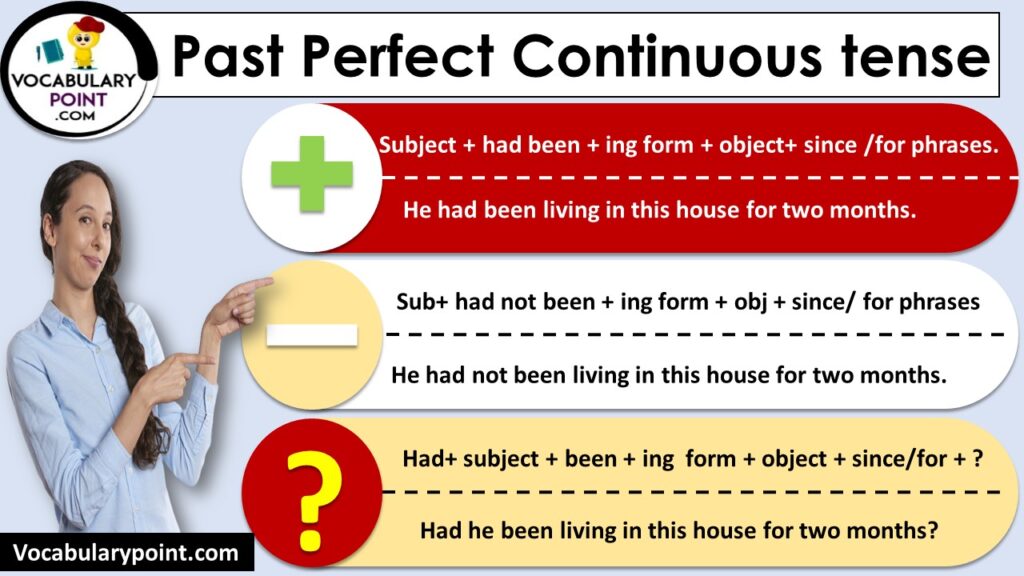
Past perfect continuous tense Examples & FormationDownload PDF Vocabulary Point
The past perfect continuous is used to express how long something had been going on before something important happened in the past. Jane had been studying for four hours when he came home. Jack had been driving four over six hours when he finally pulled over to have lunch. Past Perfect Structure Positive Subject + had + past participle

Past Perfect Continuous Tense Rules and Examples 7 E S L
According to the Cambridge Dictionary, the past perfect continuous tense is defined as a tense that refers to "actions or events which started before a particular time in the past and were still in progress up to that time in the past." Formula and Structure of the Past Perfect Continuous Tense

Difference between Past Perfect and Past Perfect Continuous 7 E S L
The Past Perfect Continuous tense is used to describe an action that began in the past and continued until a specific point in the past. This tense is formed by using "had been" + present participle (-ing form of the verb). For example, "I had been playing football for two hours before it started raining."
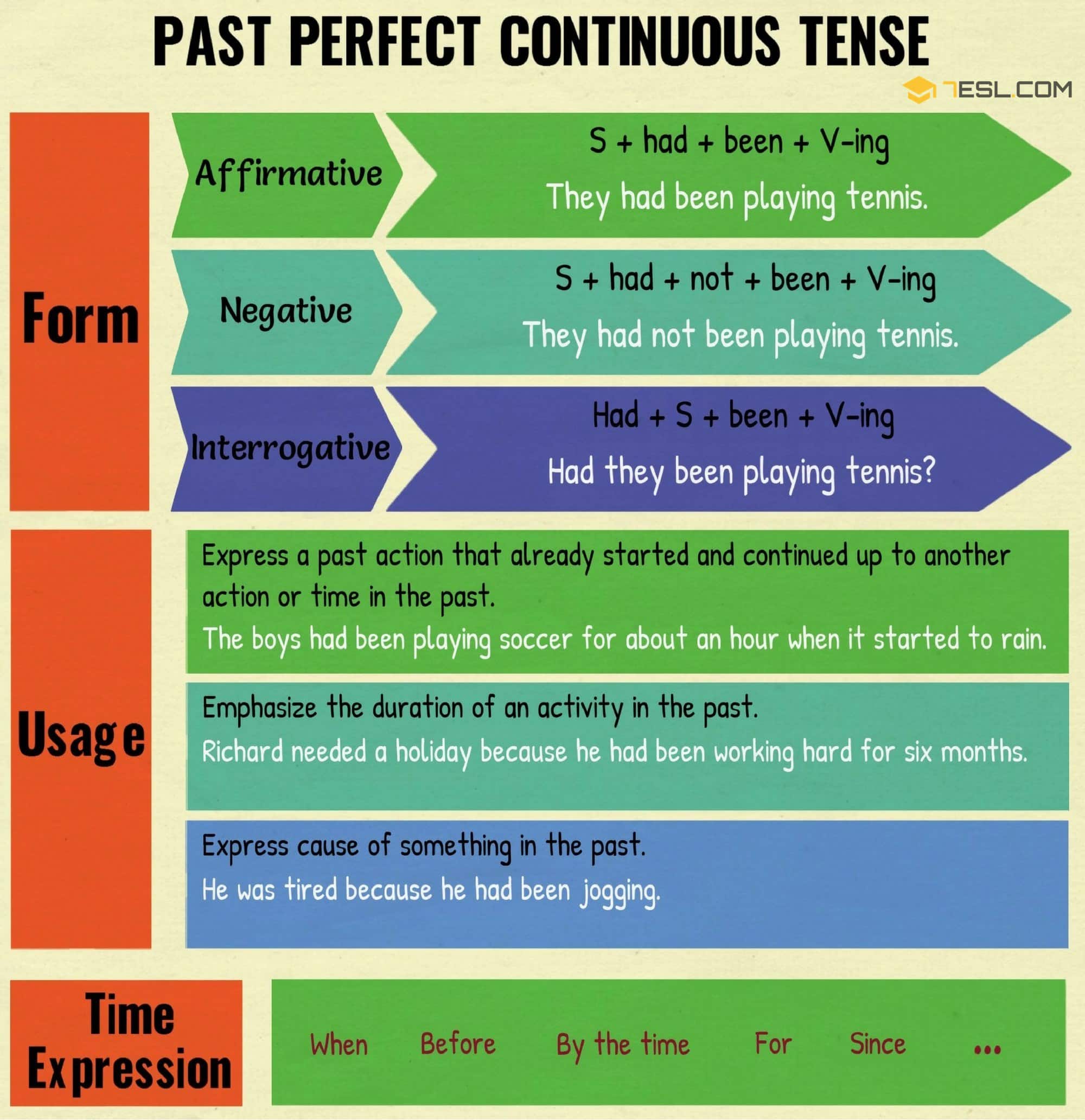
Past Perfect Continuous Tense Definition, Rules and Useful Examples Efortless English
The past perfect continuous is made from had been and the -ing form of a verb: I had been working there for a year. They had been painting the bedroom. The past perfect is used in the same way as the present perfect, but it refers to a time in the past, not the present. We use the past perfect:

Past Perfect Continuous Tense Definition & Useful Examples ESL Grammar
Past Perfect Continuous Tense. Now let's compare that with the past perfect continuous. It's similar to the past continuous but rather than helping us to show two actions taking place at the same time in the past, we can use the past perfect continuous to show that one action was in progress before a second action started..

Past Perfect Continuous Tense Definition, Rules and Useful Examples Efortless English
f t p The past perfect continuous (also called past perfect progressive) is a verb tense which is used to show that an action started in the past and continued up to another point in the past. Read on for detailed descriptions, examples, and present perfect continuous exercises. Past Perfect Continuous Forms
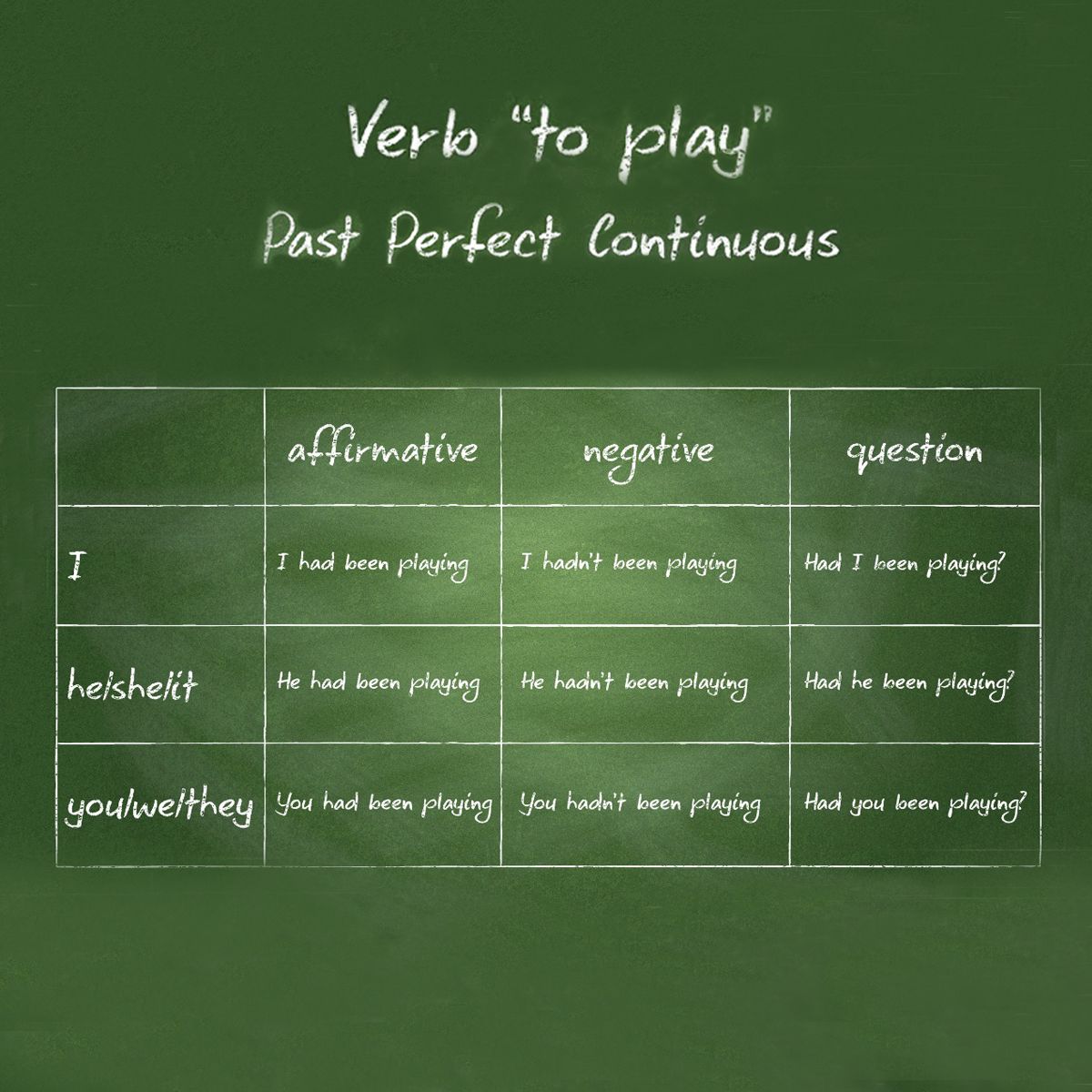
Past perfect continuous estructuras y usos British Council
Complete the text with the past perfect simple or past perfect continuous form of the verbs from the box. Use British English spelling and full forms ( I have ), not short forms ( I've ). cause disappear fly (x2) stop take off travel work. In December 1945, five military planes were on a training flight after they from a location in Florida in.
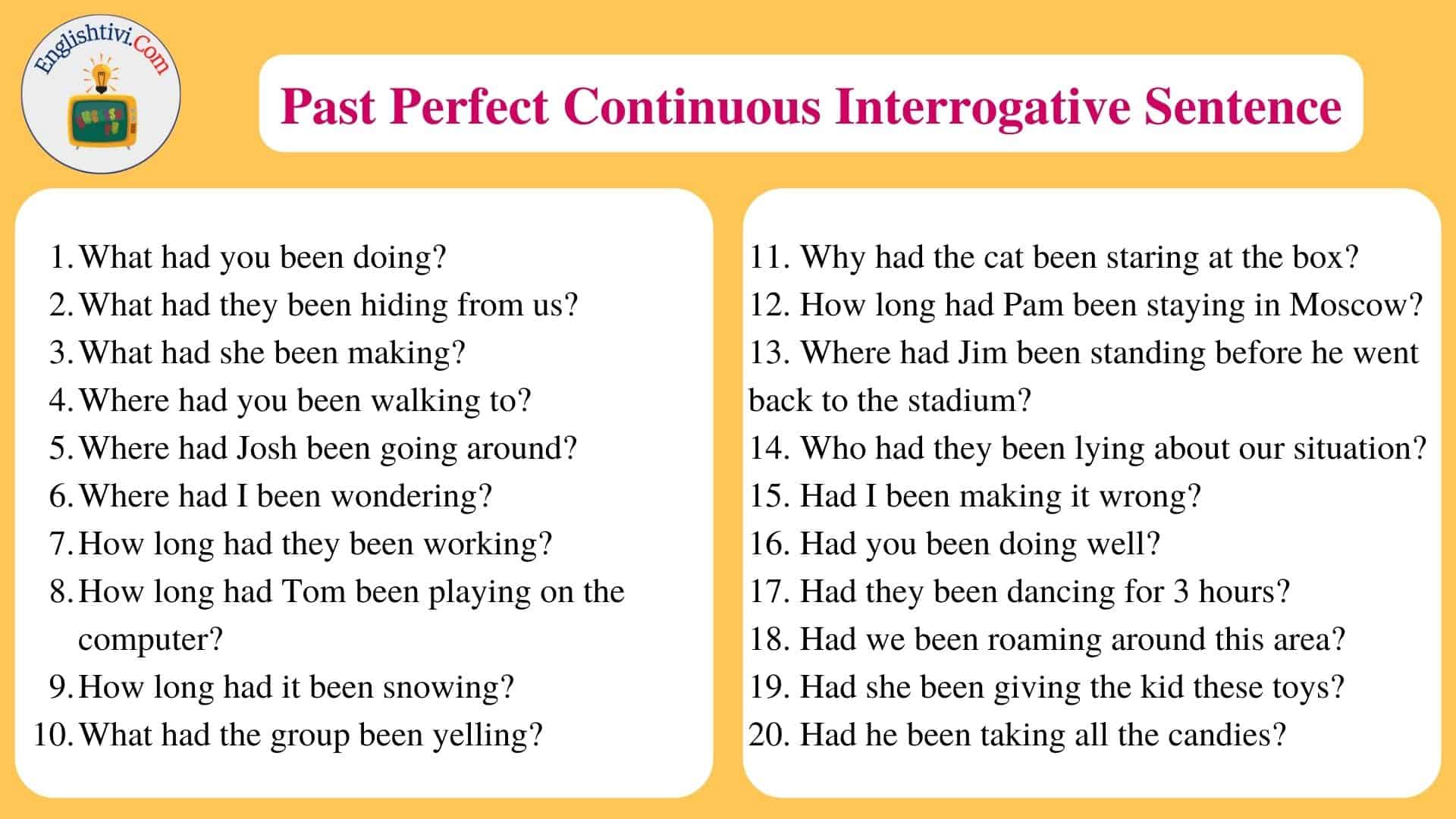
60 Sentences Example in Past Perfect Continuous Tense Englishtivi
Here's how to make the past perfect continuous. It's 'had' + been (the past participle of 'be')+ verb-ing Firstly, let's look at the positive form: I had been living You had been going She had been sleeping He had been working It had been raining We had been studying They had been cooking The short form is: 'd been verb-ing.
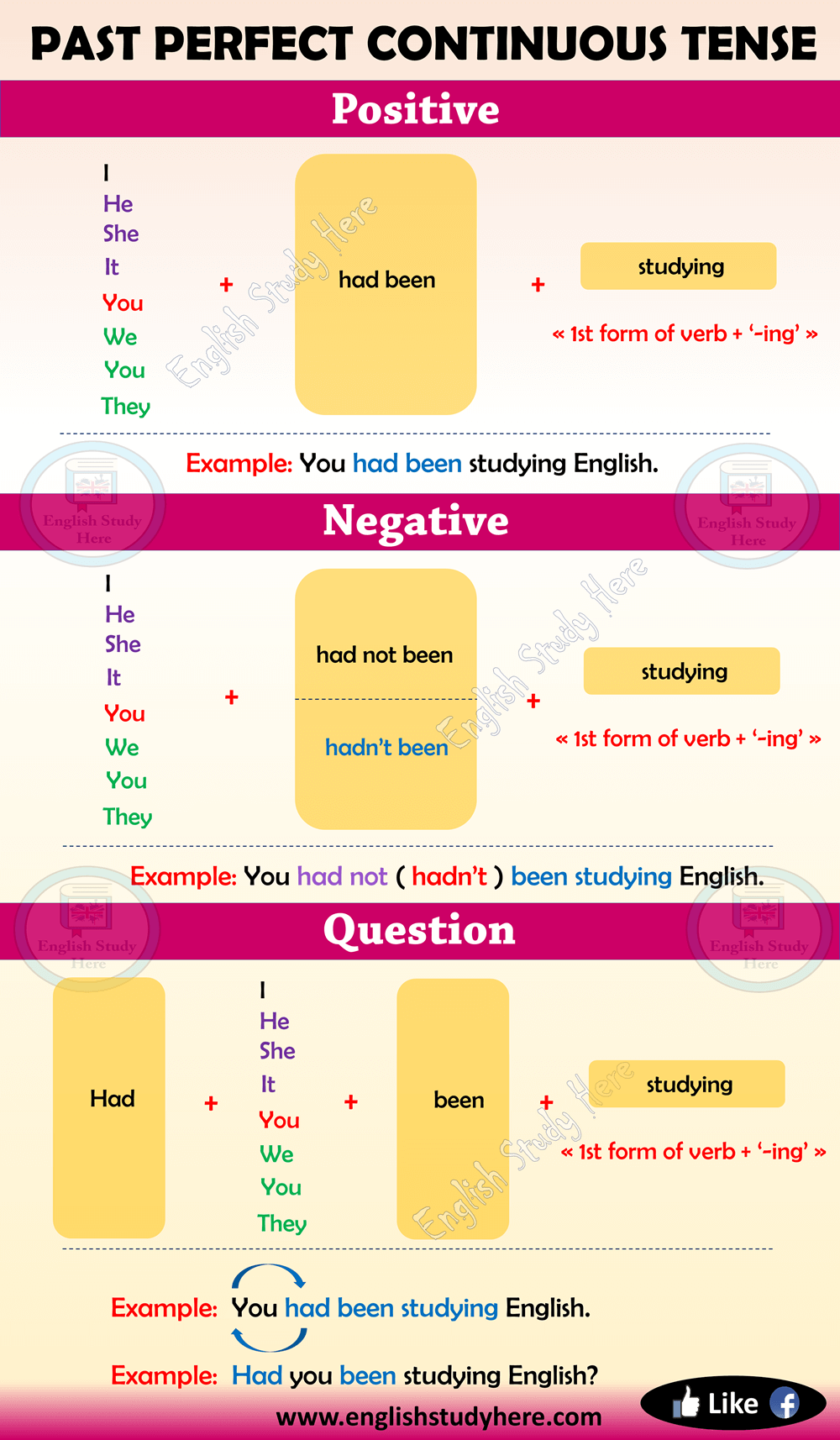
Past Perfect Continuous Tense in English English Study Here
The past perfect continuous tense refers to a verb tense that we use to express that an action that began in the past and continued up to another point in the past. It is also referred to as the past perfect progressive. We construct the past perfect continuous tense by making use of: had been + the verb's present participle (root + -ing)
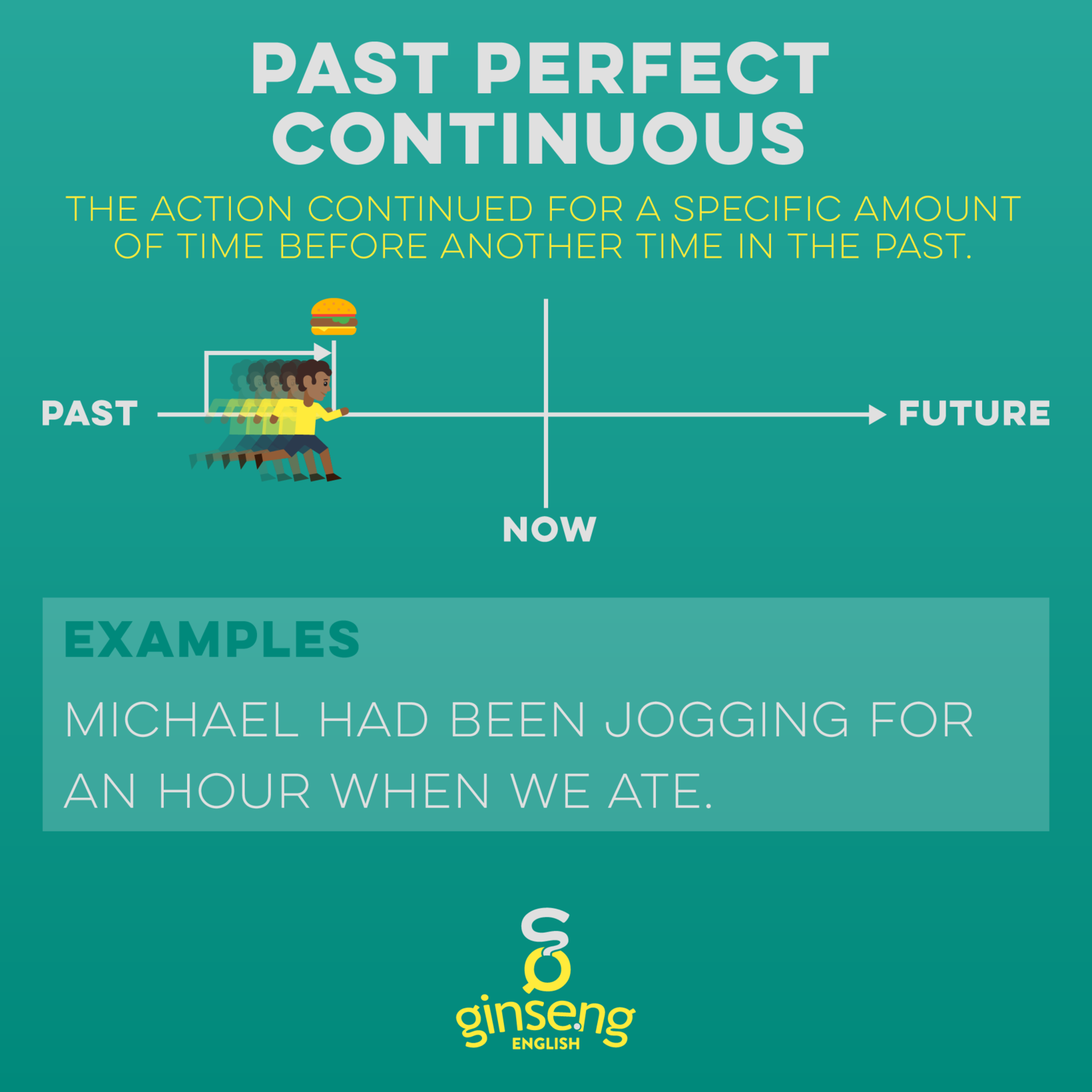
Past Perfect Continuous Tense Ginseng English Learn English
The past perfect continuous is a verb form used to refer to an action that began in the past and continued up until another time in the past. The past perfect continuous is formed using the auxiliary verbs "had" and "been," along with the present participle of the main verb (e.g., "I had been working"). The past perfect continuous.

Verb Tenses How to Use The 12 English Tenses with Useful Tenses Chart • 7ESL
In English grammar, the past perfect continuous or past perfect progressive tense is a verb tense that shows the "past in the past." Verbs in this tense express action that started in the time of the past and continued up until another period in the past. Here are some past perfect continuous examples.

The Difference Between Past Perfect and Past Perfect Continuous ESLBUZZ
1: Something that started in the past and continued up to another action or time in the past. The past perfect continuous tells us 'how long', just like the present perfect continuous, but this time the action continues up to a point in the past rather than the present. Usually we use 'for + time'.

Past Perfect Continuous Tense Definition, Examples, Formula, & Rules
We use the past perfect continuous to talk about actions or events which started before a particular time in the past and were still in progress up to that time in the past: It was so difficult to get up last Monday for school. I had been working on my essays the night before and I was very tired.

Past Perfect Continuous Infographic Past perfect continuous, English grammar, Learn english
Functions of the past perfect continuous The past perfect continuous corresponds to the present perfect continuous, but with reference to a time earlier than 'before now'. As with the present perfect continuous, we are more interested in the process.

Past Perfect Continuous Tense Rules & Examples EnglishTeachoo
We use the past perfect simple to refer to the completion of an activity and the past perfect continuous to focus on the activity and duration of the activity. Compare The past perfect simple suggests something more permanent than the past perfect continuous, which can imply that something is temporary. Compare
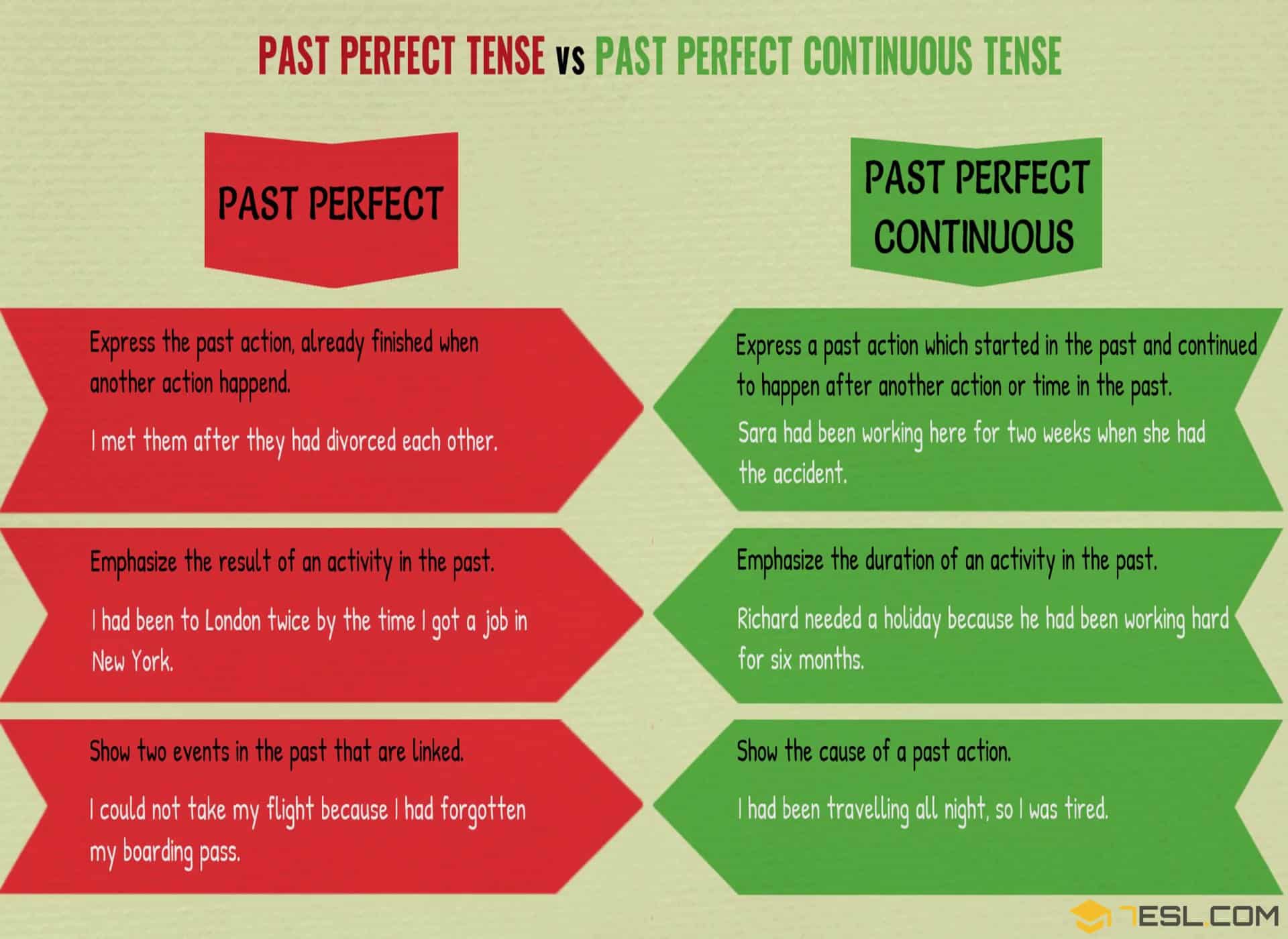
Past Perfect and Past Perfect Continuous Useful Differences Efortless English
The past perfect continuous (also known as the past perfect progressive) is a verb tense that shows that an action that started in the past continued up until another time in the past. Here's a tip: Want to make sure your writing shines? Grammarly can check your spelling and save you from grammar and punctuation mistakes.